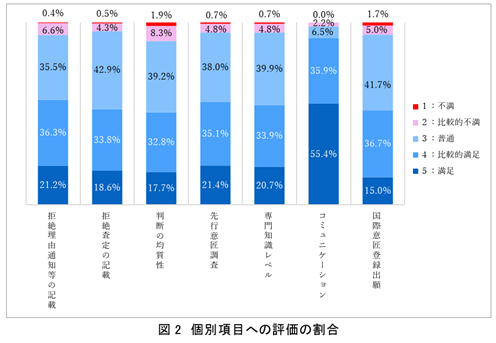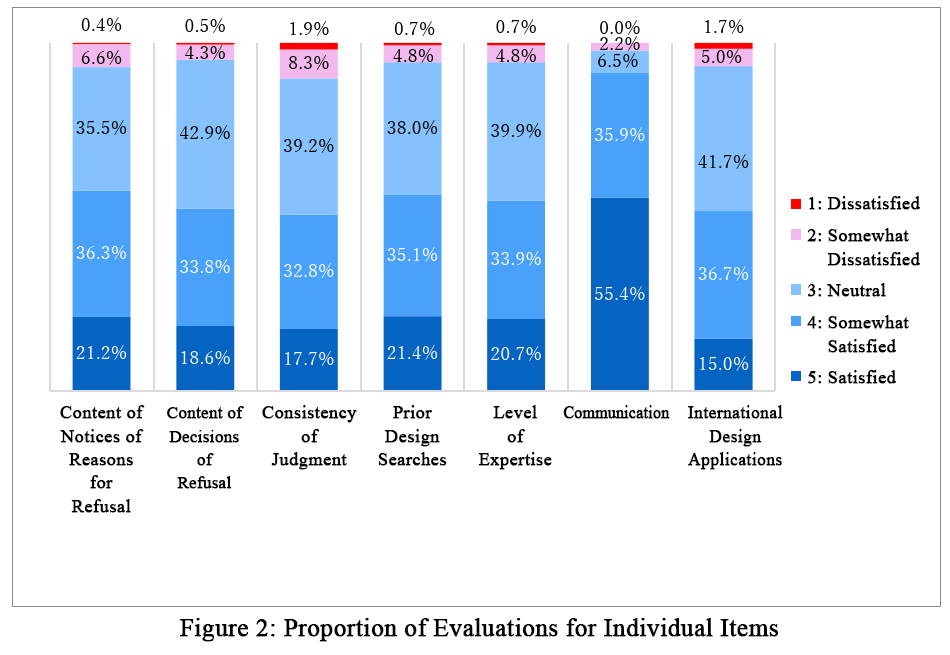目次
11月号【法務】ニュースレター

商標早期審査ガイドラインの改訂(2025年10月1日施行)
2025年10月1日に「商標早期審査・早期審理ガイドライン」が改訂され、「他人の氏名を含む商標」に係る出願が早期審査の対象に追加されることとなった。
2024年4月1日以降は、「他人の氏名を含む商標」の登録要件が緩和され、一定の知名度を有する他人が存在せず、商標中の氏名と出願人との間に相当の関連性があり、かつ不正の目的が認められない場合には、他人の承諾を得なくても登録することができるようになっている。 このことにより、「他人の氏名を含む商標」の審査には慎重な判断が求められるとして、2024年3月29日のガイドライン改訂によって早期審査の対象外とされていたが、今回のガイドライン改訂により、これらの出願についても早期審査の対象となった。
なお、以下の出願は、現在も早期審査の対象外とされている。
- 新しいタイプの商標(動き商標、ホログラム商標、色彩のみからなる商標、音商標、位置商標)の出願
- 事務所、事業所、施設等の外観・内装からなる立体商標の出願
- 商標の詳細な説明の記載を有する立体商標(商標を特定するために当該記載が必要と判断される場合を含む)の出願
- コンセント制度の適用を主張する出願
- マドリッド協定議定書に基づく国際商標登録出願(日本を指定国とするもの)
2025年10月1日付のその他の主な変更点は、以下のとおり。
- 早期審査の対象1の要件cには、出願商標の使用許諾を他人に求められている場合に限らず、使用許諾をしている場合も含まれる旨改訂。
- 共同出願において、早期審査の対象1の要件eを利用する場合に、「国際登録出願の意思に関する宣誓書」を提出する際には、出願人全員の名をもって宣誓する必要がある旨を明記。
- 出願商標の使用者が実質的に出願人の支配下にあるといえる場合は、出願人の使用とみなす旨改訂。
- 早期審査の選定結果が出る前に、通常の審査着手時期が到来した場合における選定結果の通知に係る運用を記載。
(※)早期審査の対象となる商標登録出願
対象1:出願人(またはライセンシー)が、出願商標を指定商品・指定役務の一部にすでに使用していて(または使用の準備を相当程度進めていて)、かつ、権利化について「緊急性を要する」案件
*「緊急性を要する」とは、次のいずれかをいう。
- 第三者が出願商標を無断で使用(使用の予備的行為含む)している
- 出願商標の使用(使用の予備的行為含む)について第三者から警告を受けている
- 出願商標について他人に使用許諾を求められている又は使用許諾をしている
- 出願商標について日本以外にも出願中である
- 早期審査の申出に係る出願をマドプロ出願の基礎出願とする予定がある
対象2:出願人が、出願商標をすでに使用している商品・役務(または使用の準備を相当程度進めている商品・役務)“のみ”を指定している案件
対象3:出願人が、出願商標を指定商品・指定役務の一部にすでに使用していて(または使用の準備を相当程度進めていて)、かつ、「類似商品・役務審査基準」等に掲載されている商品・役務“のみ”を指定している案件
「商標早期審査・早期審理ガイドラインの改訂について」(特許庁)
https://www.jpo.go.jp/system/trademark/shinsa/soki/shohyo_souki_kaitei.html
「商標早期審査・早期審理の概要」(特許庁)
https://www.jpo.go.jp/system/trademark/shinsa/soki/shkouhou.html
(2025年10月10日 一部当所にて抜粋して利用)
京都、鳥取、福岡の清酒が地理的表示(GI)に指定
国税庁は、2025年10月1日、清酒の地理的表示(GI: Geographical Indication)登録産品情報として「京都」「鳥取」「福岡」を公示した。国税庁が指定した酒類のGIは累計で31件となった。
GIとは、WTOの協定が定める知的財産権の一つであり、特定の産地ならではの特性(品質等)が確立されている場合に、当該産地内で生産され、一定の生産基準を満たした商品だけが、その産地名を独占的に名乗ることができる制度である。
当初、GI制度の酒類の対象は、ぶどう酒及び蒸留酒のみであったが、平成17年9月に清酒を追加、平成27年10月に全酒類が対象となった。国税庁は、国レベルのGIとして、平成27年12月25日付けでGI「日本酒」を指定した。これにより、原料米に国内産米のみを使い、かつ、日本国内で製造された清酒のみが「日本酒」を独占的に名乗ることができるようになった。
なお、GIに関しては、特定農林水産物など(酒類などを除く、農林水産物や飲食料品、一部非食用農林水産物)が農林水産省、酒類が国税庁の管轄となっている。
<参考>地域団体商標制度
地域ブランドを保護する制度として、GI保護制度以外に、地域団体商標制度がある。
地域団体商標は、地域ブランドとして用いられることが多い地域の名称+商品・サービスの名称(など)からなる文字商標であり、登録可能な知的財産権の一つである。
地域団体商標は商標権として名称を独占的に使用できる制度である一方、GIは産品の品質を地域との結びつきで証明し、地域の共有財産として保護する制度である。
どちらの制度を利用するかは、保護したい対象や目的によって判断し、両方の登録も可能である。
<参考>
国税庁HP 「酒類の地理的表示一覧」
https://www.nta.go.jp/taxes/sake/hyoji/chiri/ichiran.htm
特許庁HP 「地域ブランドの保護は、地域団体商標制度で」
https://www.jpo.go.jp/system/trademark/gaiyo/chidan/index.html
地域団体商標と地理的表示(GI)の活用Q&A
https://www.jpo.go.jp/system/trademark/gaiyo/chidan/document/faq/t_dantai_syouhyou.pdf
「令和7年度 意匠審査の質についてのユーザー評価調査報告書」の発行
特許庁ホームページによると、令和7年9⽉、「令和7年度 意匠審査の質についてのユーザー評価調査報告書」が特許庁により発行された。本調査は、ユーザーの評価、意見等を収集し、意匠審査の質の維持・向上を目的として、毎年特許庁により行われているが、出願人等にとっても、特許庁の審査が一般的にどのように評価されているか、興味深いところである。
調査対象者
日本意匠分類のグループ毎(A~N)の意匠登録件数上位の出願人(在外出願人の場合は、代理人が回答)
調査方法
調査票にオンラインで解答、無記名 調査票
下記①~⑦の個別項目について、5段階評価で集計
① 拒絶理由通知等(拒絶査定を除く)の記載の分かりやすさ
② 拒絶査定の記載の分かりやすさ
③ 判断の均質性
④ サーチ(先行意匠調査)の的確性
⑤ 意匠審査官の意匠の物品分野等に関する専門知識レベル
⑥ 面接、電話、メール等における審査官とのコミュニケーション
⑦ 国際意匠登録出願の審査全般の質

調査結果
本調査の結果から、「拒絶査定の記載」、「判断の均質性」、「専門知識レベル」が、今後、特に注力して取り組むべき項目に該当すると報告されている。
URL: https://www.jpo.go.jp/resources/report/user/document/2025-isho/2025-isho.pdf
Newsletter translated into English

Revision of Guidelines for Accelerated Examinations for Trademarks (Effective October 1, 2025)
The “Guidelines for Accelerated Examinations/Appeal Examinations for Trademarks” were revised on October 1, 2025, to include applications for trademarks containing another person’s name as eligible for accelerated examination.
Since April 1, 2024, the registration requirements for “trademarks containing another person’s name” have been relaxed. If there is no other person with a certain degree of public recognition, there is a substantial connection between the name in the trademark and the applicant, and no fraudulent intent can be found, registration will be allowed without obtaining consent of another person.
As a result, due to the careful judgment required for examining such “trademarks containing another person’s name”, these applications were excluded from the scope of accelerated examination under the guideline revision of March 29, 2024. However, under the current revision, such applications will now also be eligible for accelerated examination.
It should be noted that the following types of applications remain excluded from accelerated examination:
- Applications for new types of trademarks (motion trademarks, hologram trademarks, color-only trademarks, sound trademarks, and position trademarks)
- Applications for three-dimensional trademarks representing the exterior or interior design of offices, business establishments, facilities, etc.
- Applications for three-dimensional trademarks with detailed descriptions of the trademark (including cases where such description is deemed necessary to identify the trademark)
- Applications claiming the use of the consent system
- International applications for trademark registration under the Madrid Protocol designating Japan
Other key amendments effective as of October 1, 2025 are as follows:
- The requirements under Item c of Accelerated Examination Category 1 have been revised to include cases where a license for trademark application has been granted to another party, not limited to where said license has been requested by the other party.
- For joint applications utilizing Item e of Accelerated Examination Category 1, it has been clarified that the “Declaration of Intent for International Application” must be made in the name of all applicants.
- Where the user of the applied-for trademark is deemed to be substantially under the control of the applicant, such use will be regarded as use by the applicant.
- The operation regarding notification of the selection result is now specified for cases where the normal examination commencement date arrives before the selection result of the accelerated examination is determined.
(*)Trademark Registration Applications Eligible for Accelerated Examination
Category 1: Cases where the applicant (or licensee) is already using, or has made substantial preparations to use, the applied-for trademark for some of the designated goods or services, and urgently requires rights acquisition.
“Urgently requires rights acquisition” refers to cases where any of the following applies:
- A third party is using (including preparatory acts of use) the applied-for trademark without authorization.
- The applicant has received a warning from a third party concerning the use (including preparatory acts of use) of the applied-for trademark.
- The applicant has been requested to grant or has granted a license for the use of the applied-for trademark.
- An application for the trademark is also pending outside Japan.
- The application subject to the request for accelerated examination is intended to serve as the basic application for a Madrid Protocol application.
Category 2: Cases where the applicant designates only those goods or services that are already in use (or for which substantial preparation for use has been made).
Category 3: Cases where the applicant is already using, or has made substantial preparations to use, the applied-for trademark for some of the designated goods or services, and designates only those goods or services that are listed in the “Examination Guidelines for Similar Goods and Services” or equivalent.
“Revision of the Guidelines for Accelerated Examinations/Appeal Examinations for Trademarks” (Japan Patent Office)
https://www.jpo.go.jp/system/trademark/shinsa/soki/shohyo_souki_kaitei.html
“Overview of the Accelerated Examinations/Appeal Examinations for Trademarks” (Japan Patent Office)
https://www.jpo.go.jp/system/trademark/shinsa/soki/shkouhou.html
(Excerpted in part and utilized internally as of October 10, 2025)
Kyoto, Tottori, and Fukuoka Designated as Geographical Indications (GI) for Sake
On October 1, 2025, the National Tax Agency (NTA) announced the registration of “Kyoto”, “Tottori”, and “Fukuoka” as Geographical Indications (GI) for sake. With this designation, the total number of GI registrations for alcoholic beverages designated by the NTA has reached 31.
A Geographical Indication is one of the intellectual property rights stipulated under WTO agreements. It is a system that allows products produced within a specific region and meeting certain production standards to exclusively use that region’s name, provided that the distinctive characteristics (such as quality) unique to that region are well established.
Initially, the GI system for alcoholic beverages applied only to wine and distilled spirits. In September 2005, the scope was expanded to include sake, and in October 2015, it was further expanded to cover all alcoholic beverages. As a national-level GI, the NTA designated “Japanese Sake (Nihonshu)” on December 25, 2015. Consequently, only sake made exclusively from domestically produced rice and brewed within Japan may be labeled as “Japanese Sake”.
With regard to GIs, specific agricultural, forestry and fishery products (excluding alcoholic beverages, including agricultural, forestry and fishery products, food and beverages, and certain non-edible agricultural, forestry and fishery products) fall under the jurisdiction of the Ministry of Agriculture, Forestry and Fisheries, while alcoholic beverages fall under the jurisdiction of the National Tax Agency.
<Reference> Regional Collective Trademark System
In addition to the GI protection system, the Regional Collective Trademark system exists to protect regional brands.
A Regional Collective Trademark is a word mark consisting of a regional name, which is often used as a regional brand, combined with the name of a product or service (or similar), and is one of the types of intellectual property rights that can be registered.
While the Regional Collective Trademark system allows the exclusive use of a name as a trademark right, the GI system certifies the quality of a product through its association with a specific region and protects it as a shared asset of that region.
Which system to utilize should be determined based on the subject matter and purpose of protection. It is also possible to register under both systems.
<References>
National Tax Agency website: “Information on GIs protected in Japan”
https://www.nta.go.jp/english/taxes/liquor_administration/geographical/02.htm
Japan Patent Office website: “Protection of Regional Brands through the Regional Collective Trademark System”
https://www.jpo.go.jp/system/trademark/gaiyo/chidan/index.html
Utilization Q&A on Regional Collective Trademarks and Geographical Indications (GI)
https://www.jpo.go.jp/system/trademark/gaiyo/chidan/document/faq/t_dantai_syouhyou.pdf
Publication of “2025 User Evaluation Survey Report on the Quality of Design Examination”
The Japan Patent Office (JPO) has reported on its website that it published the “2025 User Evaluation Survey Report on the Quality of Design Examination” in September 2025. This annual survey is conducted by the JPO to collect user evaluations and opinions for the purpose of maintaining and improving the quality of design examination. For applicants and other stakeholders, it also provides valuable insight into how the JPO’s examinations are generally evaluated.
Survey Participants
Applicants with the highest number of registered designs within each group (A-N) of the Japan Design Classification (for foreign applicants, responses were provided by their representatives).
Survey Method
Responses were submitted online via an anonymous questionnaire form.
Questionnaire Form
The following seven items were evaluated using a five-point rating scale:
(1) Clarity of the content of Notices of Reasons for Refusal, etc. (excluding Decisions of Refusal)
(2) Clarity of the content of Decisions of Refusal
(3) Consistency of judgments
(4) Accuracy of prior design searches
(5) Level of expertise of design examiners regarding the relevant field of articles
(6) Communication with examiners during interviews, telephone calls, or email correspondence
(7) Overall quality of examination for international design applications

Survey Results
According to the results of this survey, it was reported that the “content of Decisions of Refusal”, “consistency of judgments”, and “level of expertise” were identified as items that should be given particular focus in future efforts.
URL: https://www.jpo.go.jp/resources/report/user/document/2025-isho/2025-isho.pdf
